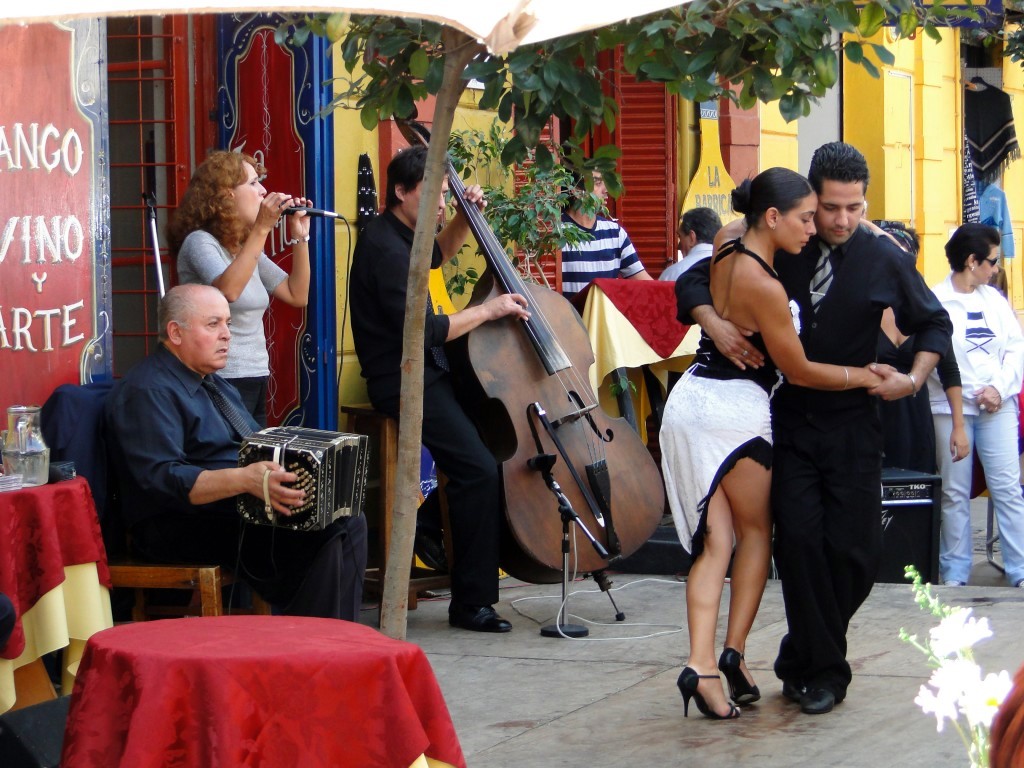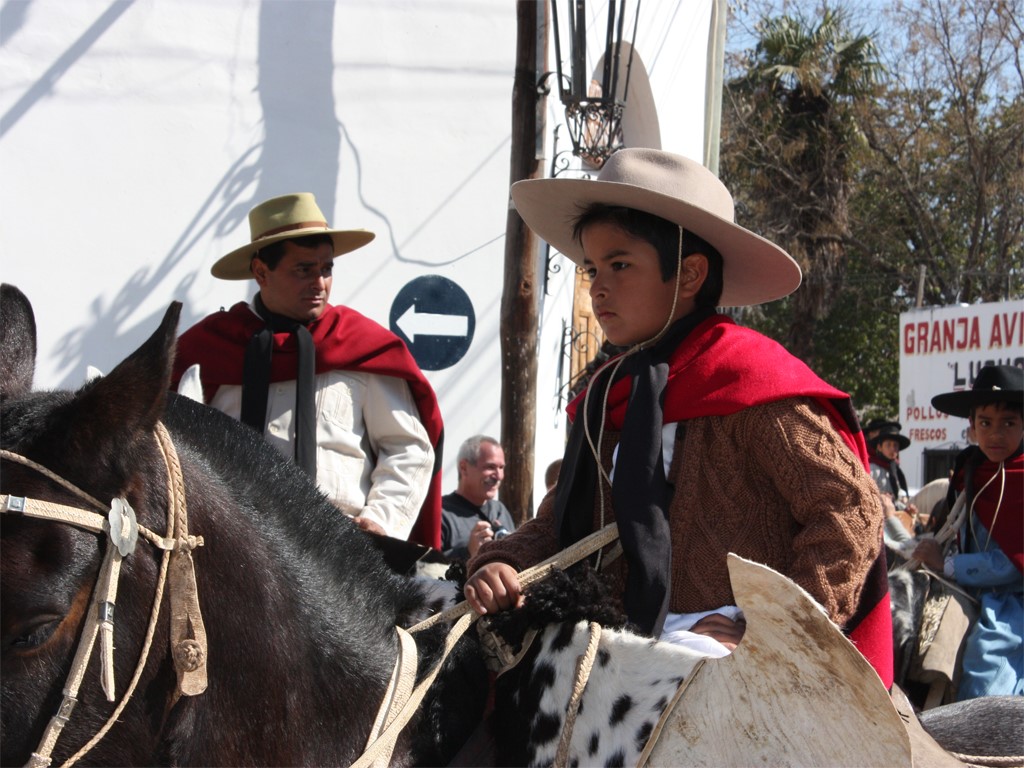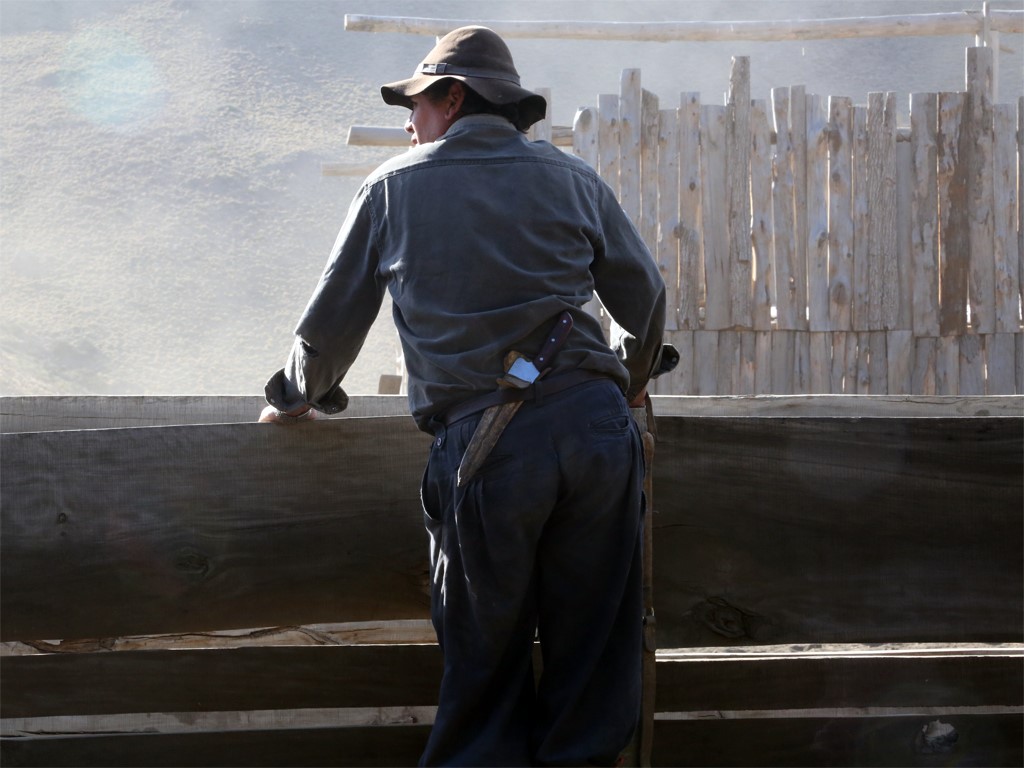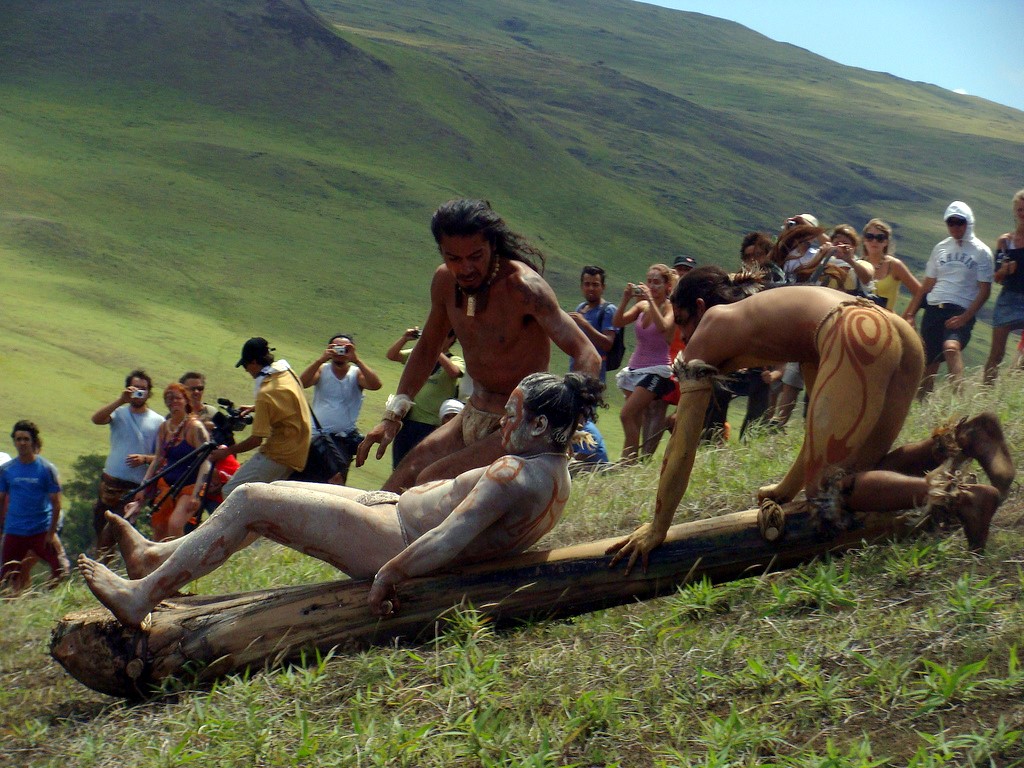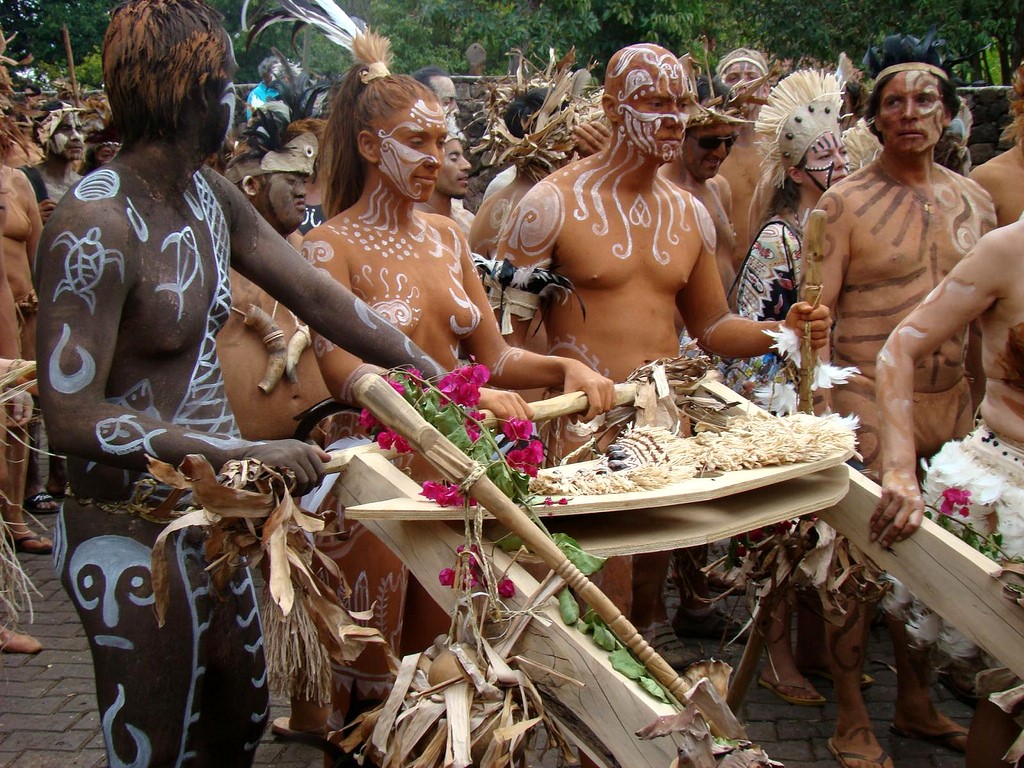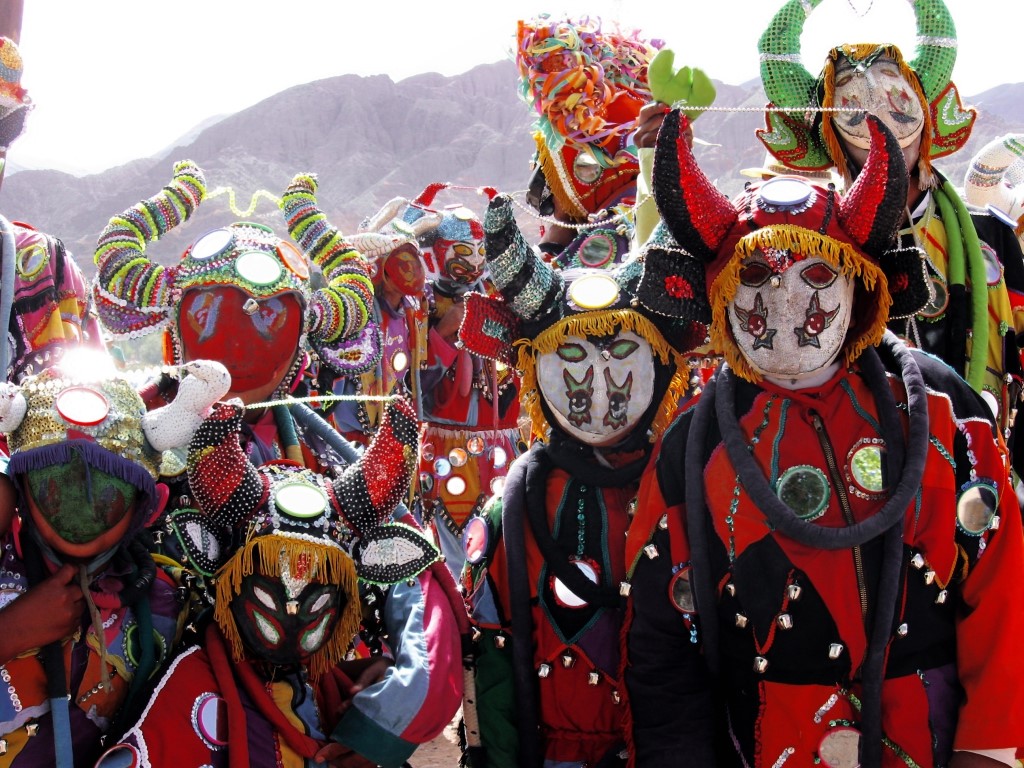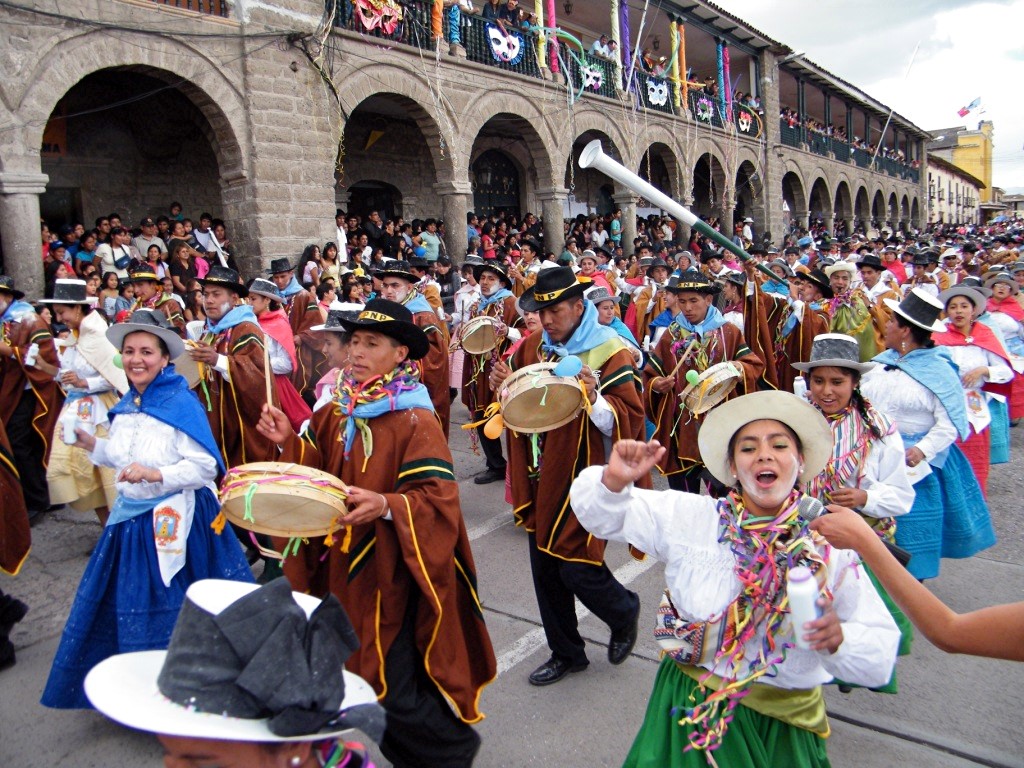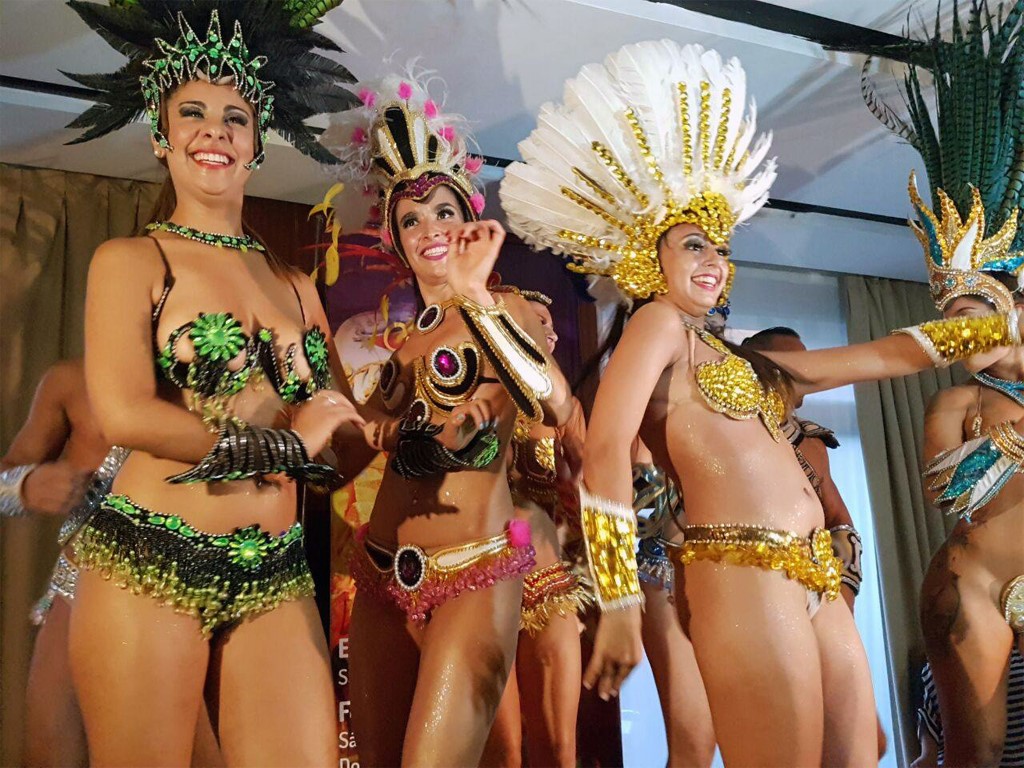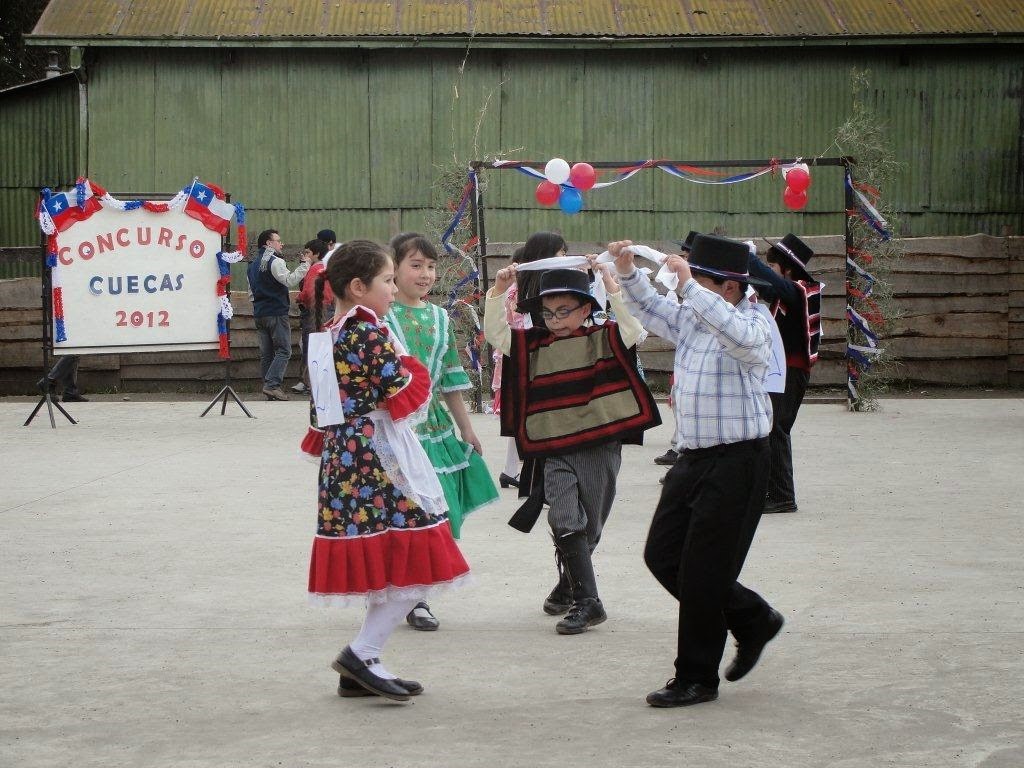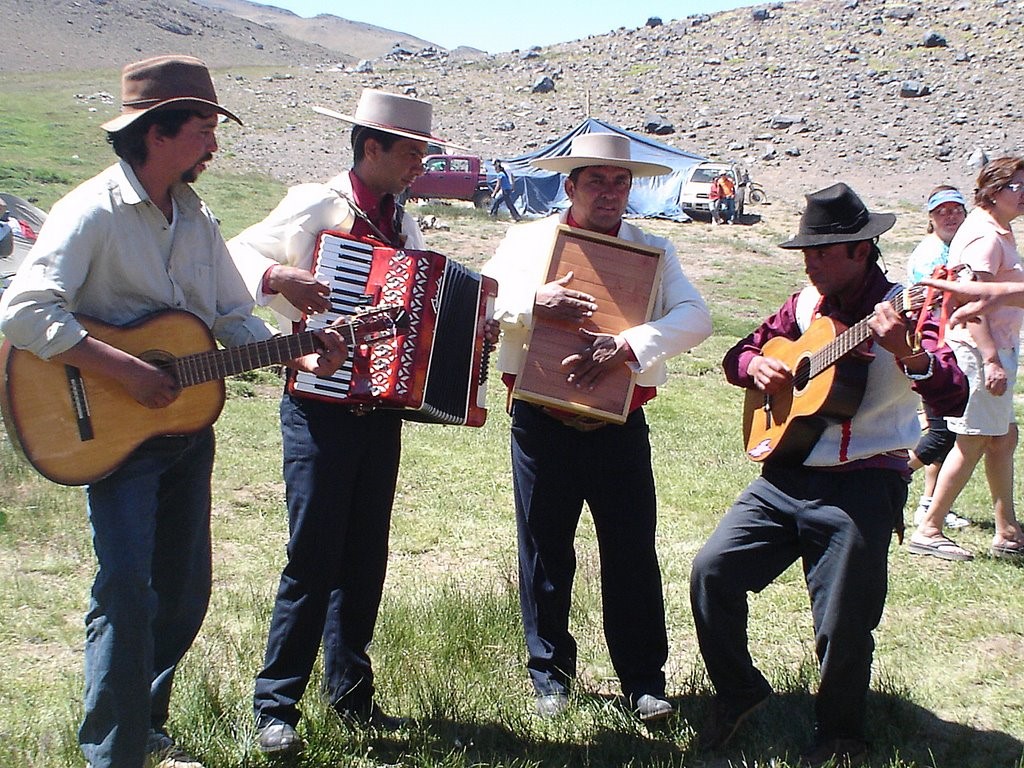For fans of music, dance, traditional costumes, local cultures; and for those who want a “rhythmic” trip, I suggest you discover their carnival traditions in Argentina and Chile, the wild sound of tango, traditional songs…
The North-West and North-East regions of Argentina live to the rhythm of carnivals, mainly during the months of January and February. In Chile, Chiloé Island, the far north of the country, and of course, the famous “Tapati” on Easter Island, will offer you a unique colorful spectacle. Here are some examples of dances and traditions that I invite you to discover, knowing that many others are possible and in regions other than those presented below.
In the heart of Buenos Aires
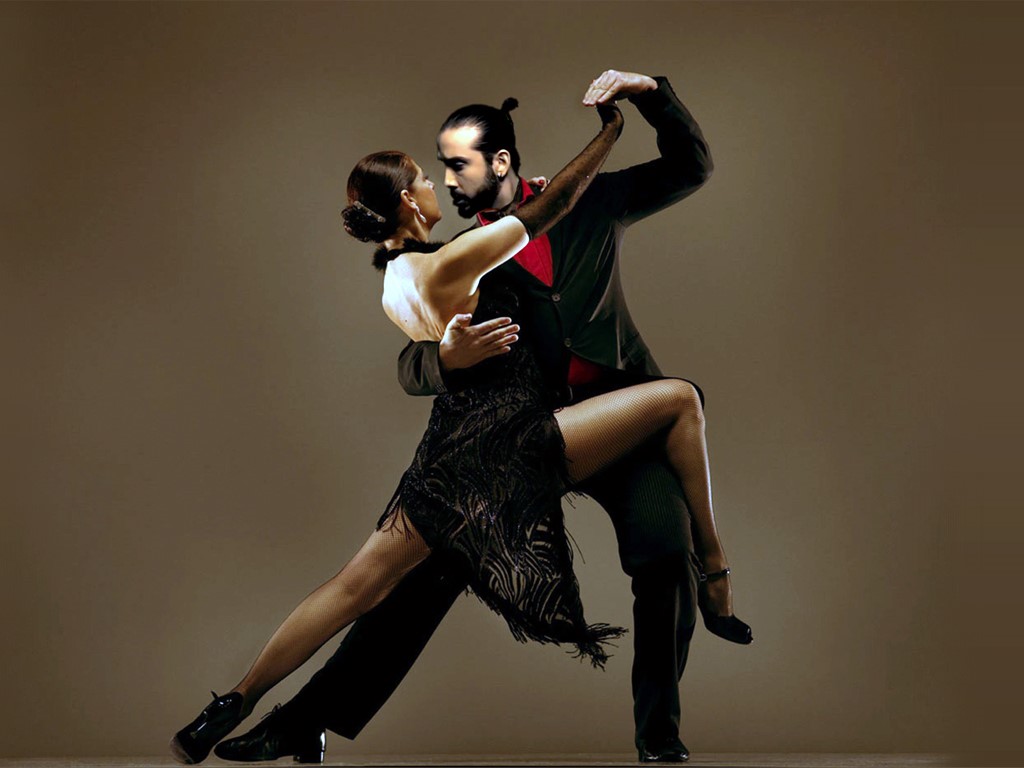
Dancing tango in Buenos Aires
Do you like tango and want to focus your travel around this dance? So, this section is dedicated to you. Here I offer you a tour in Argentina, more precisely in Buenos Aires, the capital of tango. This dance that the Argentines master evokes the grace and sensuality that’s specific to them.
Some say that tango is not a dance, but an obsession. For the dancer, tango is an integral part of his life, like eating or sleeping. Erotic, passionate and melancholic, the dancer becomes an accomplice, not only of the body, but also of the soul…
Buenos Aires, its history, tango and milongas, are one… This dance will not leave you indifferent, those who practice it already know it, but if you don’t know it yet, then let yourself be guided by the tango instrument: the “Double A”, that’s to say the bandonéon!
Gaucho traditions and parades

Folklore and Gauchos
In many small towns in Argentina and Chile, on various dates, many festivals are organized. This is then the opportunity for the gauchos from the surroundings of these assembly points to parade. It’s a spectacle of great beauty to see these gauchos, men and women of all ages, dressed impeccably, with their most beautiful hat, poncho, belt, boots, mounts… and of course the faithful companion, the horse, “hair-styled” like never.
Indeed, during these parades, it’s the opportunity for these gauchos to represent their farm or estancia, they must then live up to the event. Seeing these gauchos coming from all directions is a real pleasure to watch, because you wouldn’t suspect there were so many of them!
Tradition festival
On November 10, wherever you are in Argentina, don’t miss the opportunity to see the Festival of Tradition. Many activities, for this festival where all the gauchos come together to demonstrate “their” tradition which is so strong. Numerous stations where we eat meat, empanadas and of course the wine which flows freely. The big show is what we call here the “jineteada”, a kind of rodeo. Many gauchos will try to ride these “crazy” horses and the goal is to stay on the animal’s back for more than 30 seconds. The most famous in Argentina is that of San Antonio de Areco, in the province of Buenos Aires.
All in “live” music with musicians playing, without ever stopping, the great classics of folklore. The song is interspersed with sentences which follow one another and which will leave anyone who can understand them pensive. In this type of gathering, every look, every little thing is the opportunity for a photo or an unforgettable memory. Of course, I will not fail to tell you where to go to see this kind of “show” which is in fact a simple way of living here.
This type of gathering takes place on other occasions. In Chile, there’s no party without a rodeo: the “huasos”, the Chilean cowboys, lords of the prairies, tamers of horses and bulls “toros”, demonstrate their dexterity in front of an audience exalted.
Easter Island Traditions
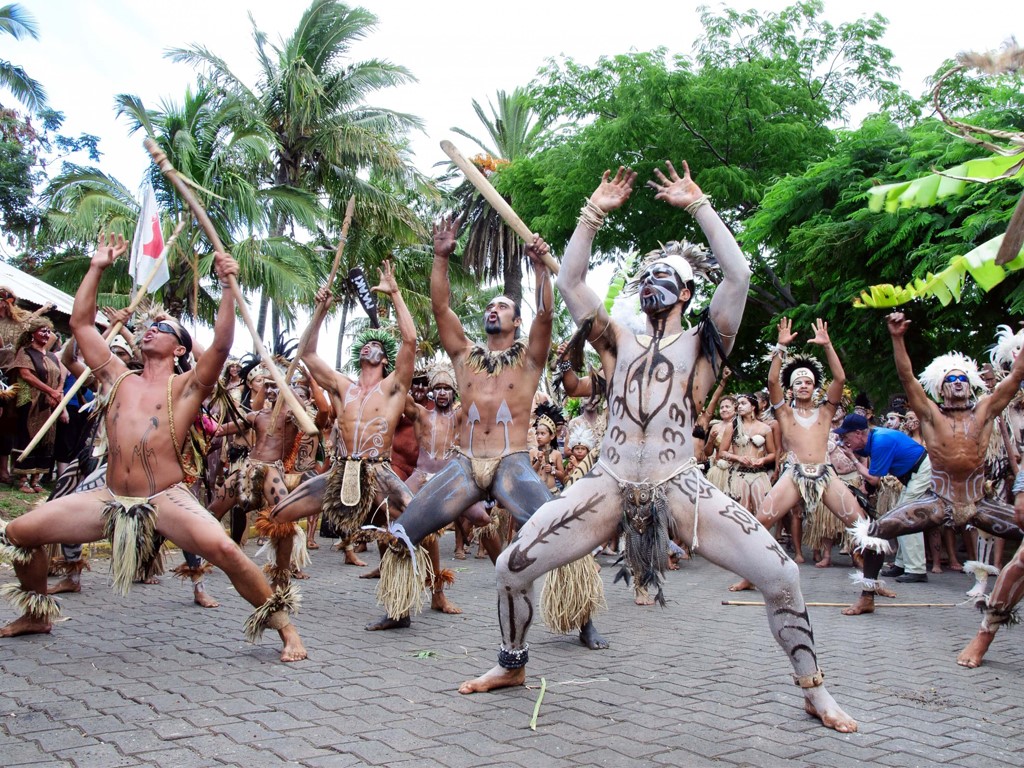
The Tapati festival
Every year on Easter Island, the TAPATI festival takes place, in the middle of summer, during the first two weeks of February. Very often, 3 teams compete for the ultimate goal of this festival, the election of the Queen of TAPATI. 3 teams, therefore 3 contenders for the title… each contender has a myriad of friends and family who support them and who participate in the different competitions, each competition earns points, and in the end, the team with the most points makes win its candidate the long-awaited crown.
Daytime competitions are of all kinds: making shell necklaces, making leaf baskets and hats, cooking competitions, swimming on “totara” (rush) “floats”, carving on wood and stone, relay race with 20 kg of banana bunch on the shoulders, and the highlight of the show: descent of a hill on a banana tree trunk, excellent!
Then every evening, on a stage that has been set up near the sea, a competition of songs, dances, stories, body painting takes place… Quite festive and very nice!!! Rapa Nui music captivated me.
Traditions from the Northwest of Argentina
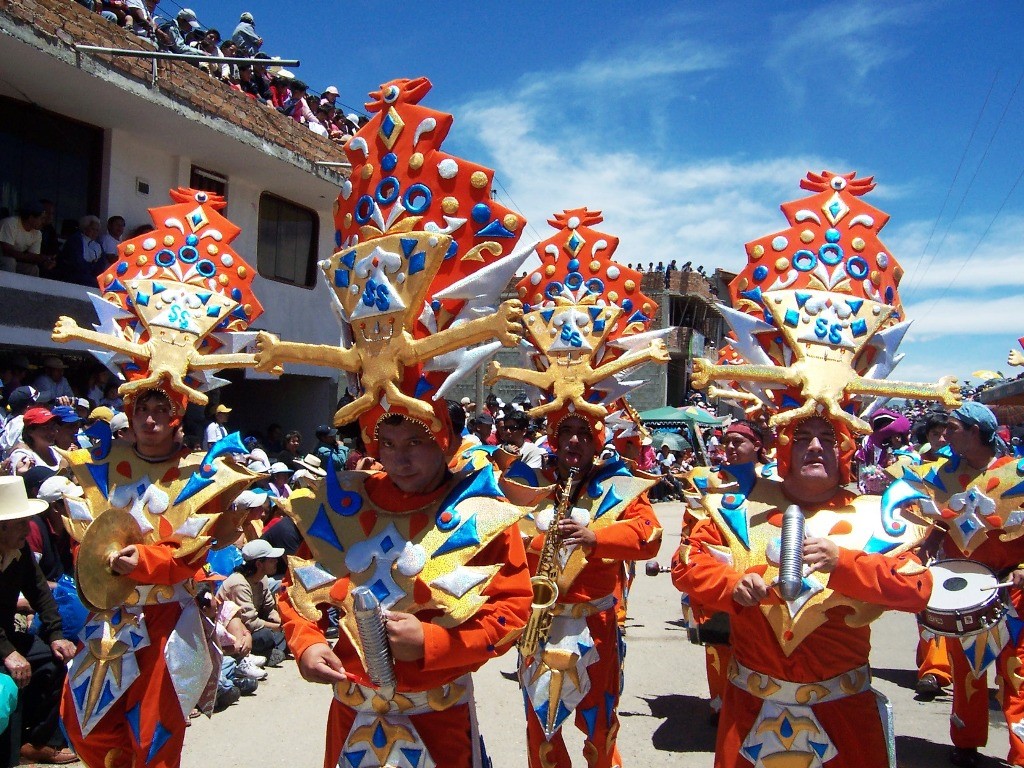
Carnivals from the provinces of Salta and Jujuy
Carnivals from the northwest of Argentina, in Jujuy, are celebrated especially in the Quebrada de Humahuaca, while the Lerma Valley is the main place of celebration in the province of Salta, although the activities extend over all the localities of these two provinces.
The two highlights of the carnival ceremony are the uncovering and the burial of the devil. The devils appear before the ceremony begins. Once finished, everyone goes down singing and throws water, flour, serpents, etc. on each other… Temptation Sunday finalizes the festivities by burying the devil, who will find his hiding place with coca leaves, alcohol and cigarettes to help him get through another year.
Festivities, music, joy… Almost unreal different clothes. Laughter hidden under a disguise. Bodies take on other shapes, everything is flooded with color. Many people play at being someone else, while some show themselves as they are. During the carnival, each city, each village, each neighborhood hides and reveals its true face.
Exotic parades in Argentina
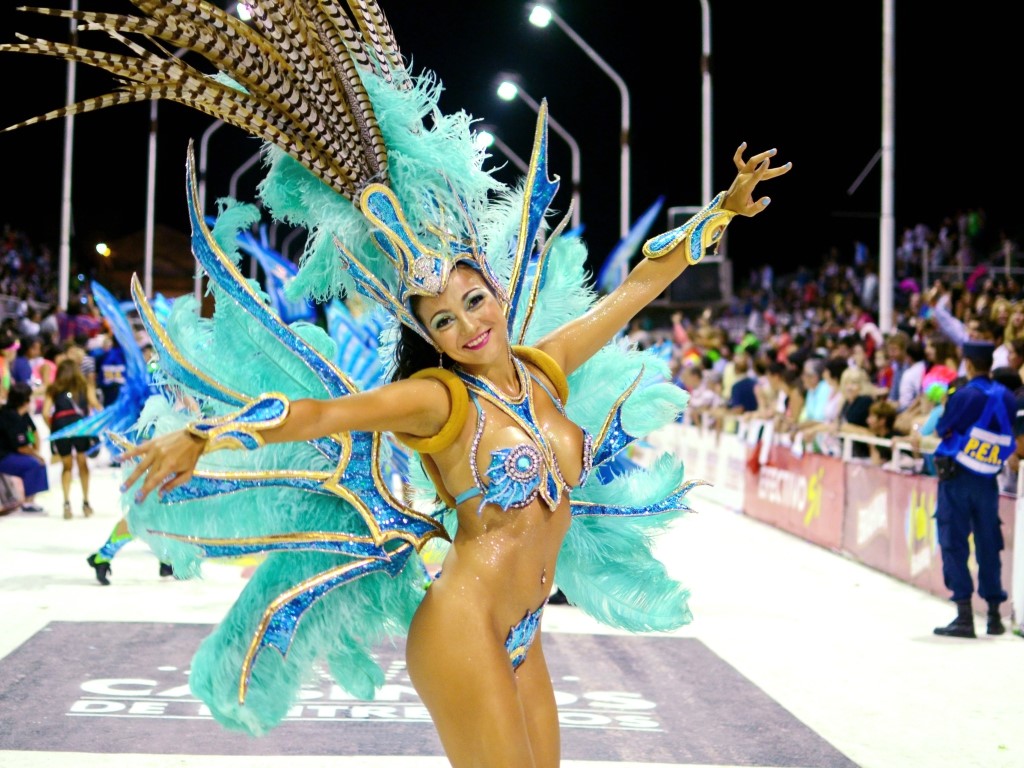
The Gualeguaychú Carnival
The carnival season in Argentina begins with parades that take place on the country’s main thoroughfares. Naked dancers, music, feathers and sequins, amaze us in this parade which takes place in the town of Gualeguaychú in the province of Entre Ríos, about 230 km north of the capital Buenos Aires.
A colorful crowd of some 12,000 people takes part in dancing during this carnival parade in Argentina. Despite the global supremacy and fame of the Brazilian carnival, the Argentine carnival of Gualeguaychú sets the steam up just as much thanks to its shimmering colors, its women in costumes and its naked women… This quiet town in Argentina on the banks of the Uruguay River, suddenly switches during the southern summer (December to March) into the intoxication of an exotic carnival, like that of Rio de Janeiro.
Musical meetings in Chile
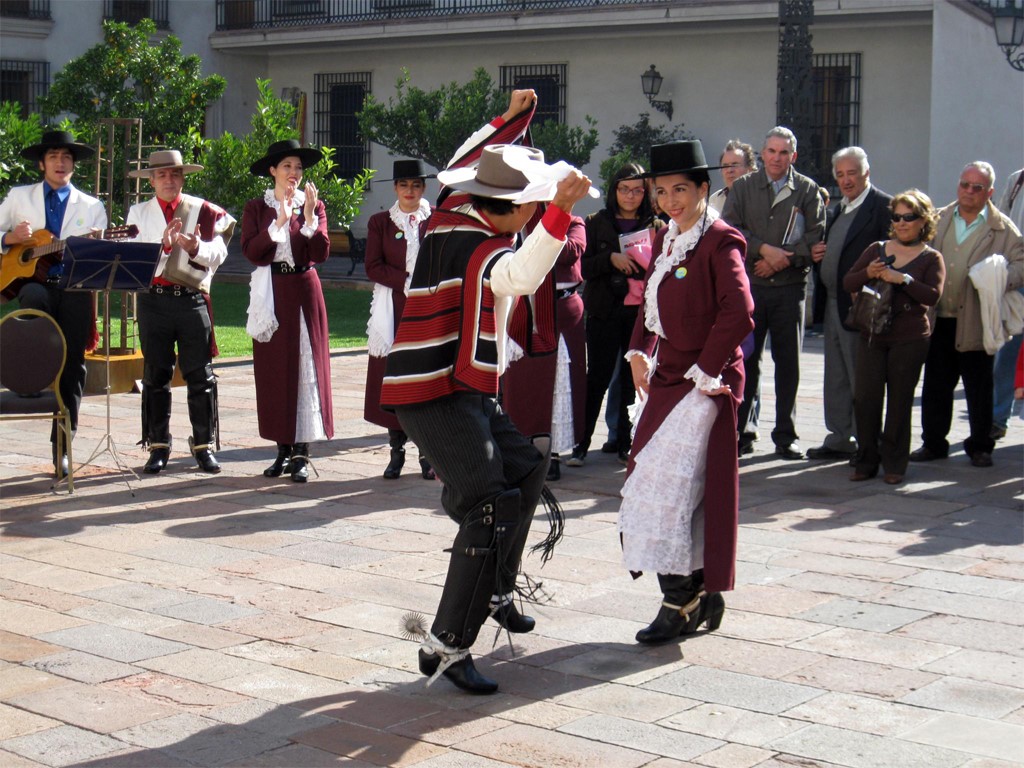
Chiloé festivals
Every year, the meeting of Chilote musicians and singers “Encuentro Musicos y Cantores Chilotes” brings together islanders for a celebration of popular culture with traditional music from Chile, songs and dances, typical dishes and local crafts. In the manner of ancient rituals, the festival opens with a procession accompanied by archaic songs with unusual charm. The people, usually full of reserve and kindness, let their joy explode in front of the food and sweets stalls.
On Chiloé Island, many music and craft festivals are organized in the villages of the archipelago during the summer season. At the end of January, Castro hosts the Huaso Chilote Festival, marked by rodeos, and in mid-February, the Costumbrista Chilote Festival, with dances, music and traditional gastronomy.
La Semana Dalcahuina, the second week of February, marks the annual Dalcahue festival. At the beginning of February, the Island Folklore Meetings are held in Achao on the Quinchao island, which attracts popular music groups from the surrounding area. Finally, in Quellón, the second week of February is marked by Semana Quellonina, where rodeos rub shoulders with theater and traditional Chilean music.
 English
English Español
Español Français
Français